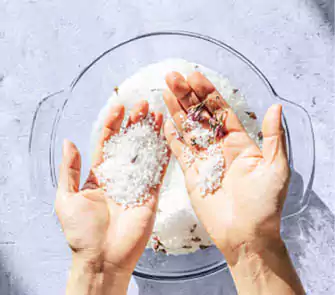Atopic dermatitis (AD), commonly known as eczema, is a collection of inflammatory skin conditions. Symptoms of AD may include rashes, dry and scaly or cracked skin, itching, skin infections with open, weeping sores, as well as discolored skin and blisters. The condition is caused by certain triggers that vary from person to person.
Now, a new study from researchers at the University of California, San Francisco (UCSF), suggests that high levels of dietary sodium may raise the risk of developing atopic dermatitis.
The study found that people with a 1-gram increase in estimated 24-hour urine sodium excretion were 11% more likely to develop atopic dermatitis, 16% more likely to have active symptoms of existing AD, and have an 11% higher chance of increasing AD severity. The study is published in JAMA DermatologyTrusted Source. “[Atopic dermatitis] encompasses a spectrum of inflammatory processes and is triggered by various environmental factors,” Katrina Abuabara, MD, associate professor of dermatology at UCSF and senior study author, told Medical News Today. “This study was the first step in that we were able to show an association between dietary salt and AD in a large population.” Effects of sodium on atopic dermatitis The study was a cross-sectional investigation of data for 215,832 participants in the UK BioBank aged 37 to 73, with a mean age of 56.52 years. Of this group, 54.3% were female. The cohort included 10,839 people who had AD, while the remainder did not. Urinalysis of participants established that the mean estimated 24-hour urine sodium secretion was 3.01 grams, which represented about 90% of the previous day’s dietary sodium intake. The researchers observed that for every 1 gram of sodium above that mean, atopic dermatitis risk increased. “It is hypothesized that sodium is stored in the skin to prevent water loss, and may help prevent infection. However, it can also activate cells in the immune system, triggering some inflammatory pathways and removing the ‘brakes’ from others,” Abuabara explained. “For reasons we don’t yet understand, some people may be more susceptible to the effects of sodium, just as people differ with respect to their susceptibility to the effects of sodium on blood pressure. I think it is important to have experimental evidence that reducing dietary salt can actually improve eczema symptoms before we recommend dietary changes specifically for eczema.”










